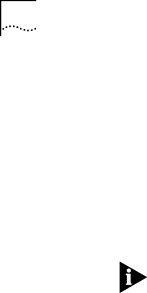
Where:
BCT = blocked call type (A for analog calls, N for none, D for digital, B for both analog and digital.)
DS0# = DS0 number,
The blocked
As changes are made to this screen, the configured and current column are updated to reflect the new configuration.
If DS0
Menu Option 14 Configuring the DS0 level service state
This option allows you to remove or restore a DS0 from/to service.
The ability to selectively route calls on specific
Use the following syntax when configuring this option:
DSS: DS0# (for single DS0)
DSS: DS0#, DS0#, DS0#-DS0#,... (for multiple DS0s)
Where:
DSS = DS0 service state (I for
DS0# = DS0 number,
Menu Option 15 Configuring the Short Haul NIC line length
If you are using a Short Haul NIC in conjunction with the T1/PRI card, it provides a more reliable signal over shorter span line distances. The NIC provides a